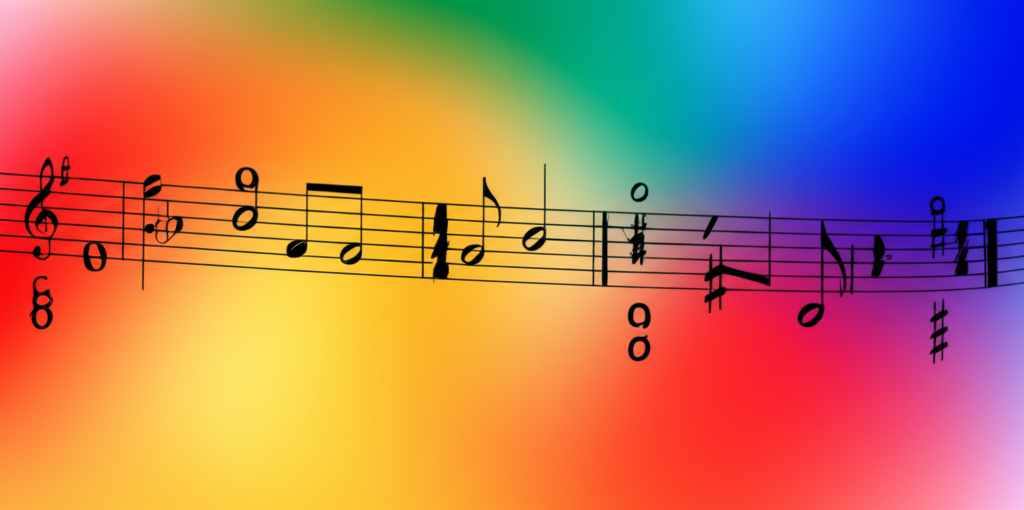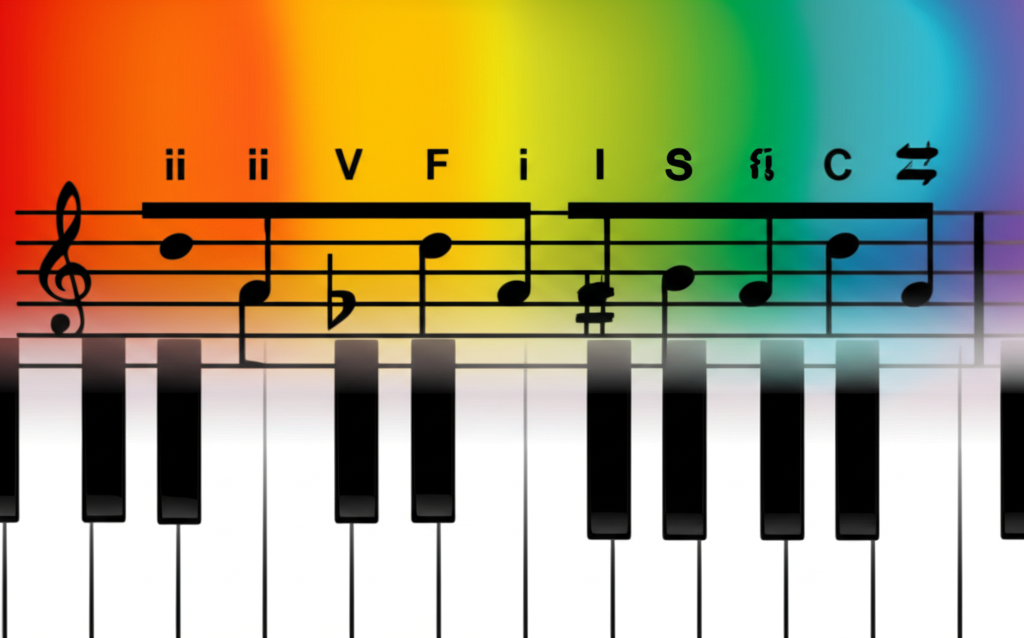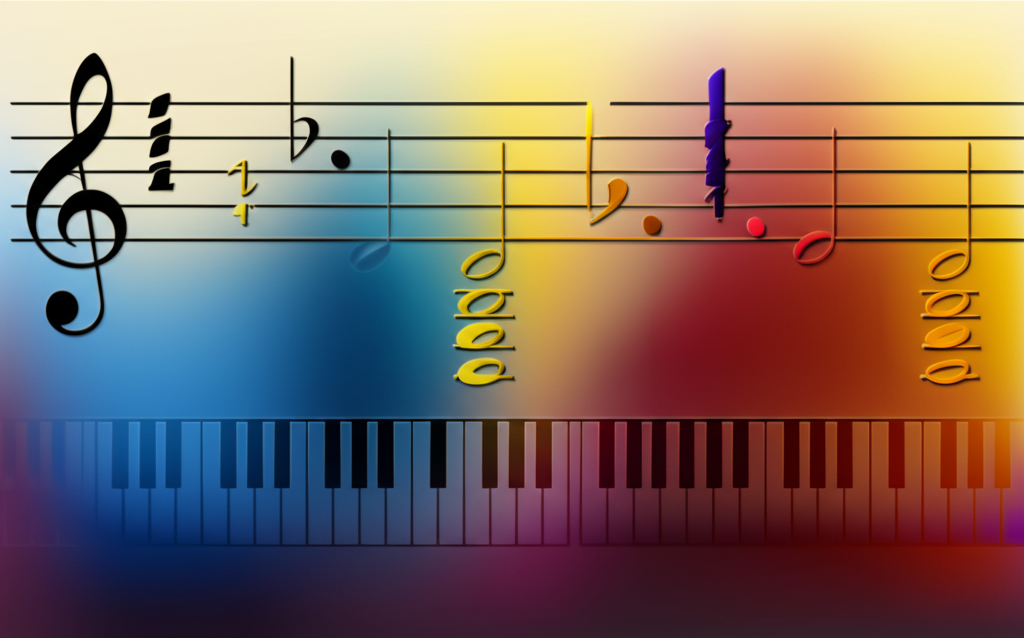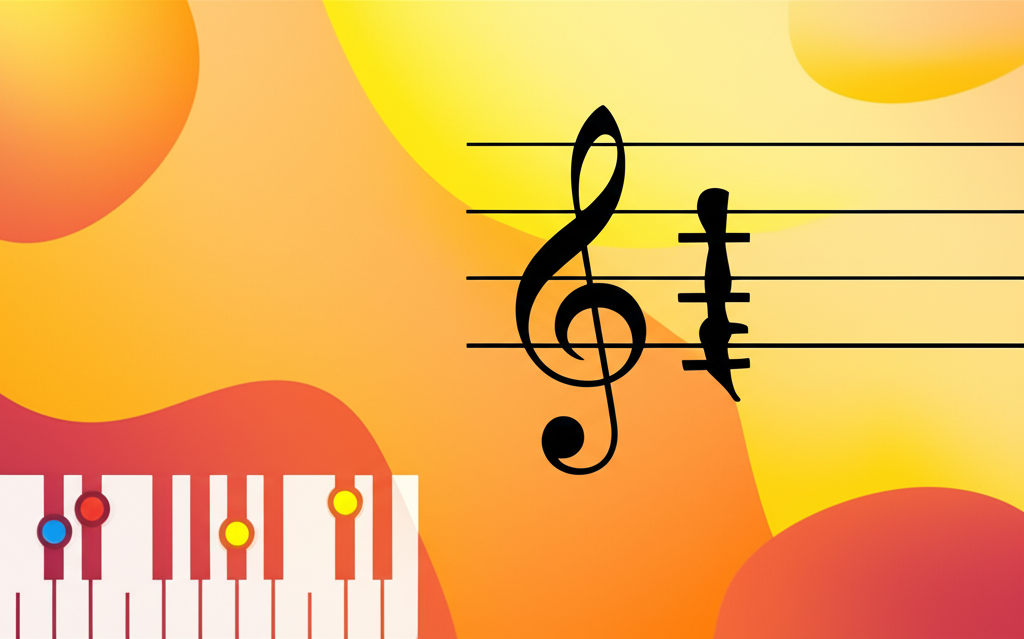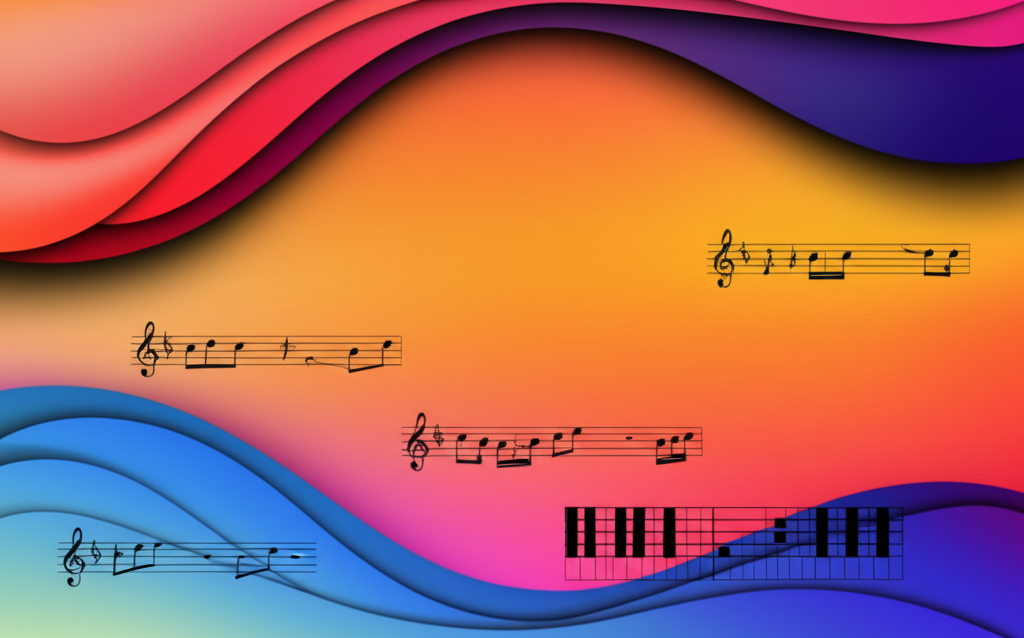
Secondary Dominants: Adding Color and Direction to Chord Progressions

b4n1
May 17, 2025, 4:26 p.m.
Secondary Dominants: Adding Color and Direction to Chord Progressions
Summary:
Secondary dominants are powerful harmonic tools that add color, tension, and forward momentum to chord progressions. By temporarily "tonicizing" non-tonic chords, secondary dominants create brief harmonic detours that enrich musical narratives. This article explores the theory behind secondary dominants, their practical applications across various musical genres, and techniques for effectively integrating them into your compositions and improvisations.
Keywords:
Secondary dominants, tonicization, chord progressions, functional harmony, dominant-tonic relationship, V/V, V/ii, altered chords, modulation, jazz harmony, classical harmony, tension and release.
Introduction:
In functional harmony, the relationship between the dominant (V) chord and the tonic (I) chord creates one of music's most fundamental tensions and resolutions. The dominant's pull toward the tonic establishes key centers and provides a sense of arrival when resolved. But what if we could extend this powerful relationship to other chords within a key?
Secondary dominants do exactly that—they apply the dominant-tonic relationship to non-tonic chords, temporarily treating these chords as if they were tonics in their own right. This technique, known as "tonicization," creates brief harmonic excursions that add interest, intensity, and forward motion to chord progressions.
From Bach's intricate counterpoint to jazz standards, from Beatles songs to contemporary pop hits, secondary dominants appear across musical eras and genres. Understanding how to recognize, construct, and use these versatile harmonic devices opens up a world of creative possibilities for composers, arrangers, and improvisers.
The Dominant-Tonic Relationship: A Refresher
To understand secondary dominants, we first need to review the foundational dominant-tonic relationship.
In any major or minor key, the dominant chord (built on the fifth scale degree) creates tension that strongly resolves to the tonic chord (built on the first scale degree). This relationship is characterized by:
- The leading tone: The third of the dominant chord is the seventh scale degree, which naturally wants to resolve up to the tonic note.
- The tritone: In dominant seventh chords, the third and seventh form a tritone interval that seeks resolution.
- Bass movement: The root movement from the dominant to tonic (falling fifth or rising fourth) provides a strong sense of resolution.
For example, in C major, the G dominant seventh chord (G-B-D-F) creates tension that resolves satisfyingly to C major (C-E-G):
Note how the tritone between B and F resolves outward to C and E, and how the leading tone (B) rises to C.
What Are Secondary Dominants?
Secondary dominants are dominant chords that temporarily target a chord other than the tonic as their resolution point. In other words, they are the dominant of something other than I.
In any major key, we can build secondary dominants to target the following diatonic chords:
- ii chord — using V/ii (the dominant of ii)
- iii chord — using V/iii (the dominant of iii)
- IV chord — using V/IV (the dominant of IV)
- V chord — using V/V (the dominant of V)
- vi chord — using V/vi (the dominant of vi)
- vii° chord — using V/vii° (the dominant of vii°), though this is rare
Note that we don't need a secondary dominant for the I chord because the primary dominant (V) already serves this function.
Constructing Secondary Dominants
To create a secondary dominant, follow these steps:
- Identify the target chord (the chord you want to approach with a secondary dominant)
- Find the note that is a perfect fifth above the root of your target chord
- Build a dominant chord (usually a dominant seventh) on this note
For example, in C major, if we want to create a secondary dominant for the ii chord (D minor), we:
- Identify D minor as our target chord
- Find the note a perfect fifth above D, which is A
- Build a dominant seventh chord on A: A7 (A-C♯-E-G)
The resulting A7 chord is our V/ii (pronounced "five of two"). Notice that this chord contains C♯, a note outside the C major scale. This chromaticism is a hallmark of secondary dominants and contributes to their distinctive sound.
Let's look at all the possible secondary dominants in C major:
| Target Chord | Secondary Dominant | Notes (as 7th chord) | Non-Diatonic Notes |
|---|---|---|---|
| ii (Dm) | V/ii (A7) | A-C♯-E-G | C♯ |
| iii (Em) | V/iii (B7) | B-D♯-F♯-A | D♯, F♯ |
| IV (F) | V/IV (C7) | C-E-G-B♭ | B♭ |
| V (G) | V/V (D7) | D-F♯-A-C | F♯ |
| vi (Am) | V/vi (E7) | E-G♯-B-D | G♯ |
| vii° (B°) | V/vii° (F♯7) | F♯-A♯-C♯-E | F♯, A♯, C♯ |
Using Secondary Dominants: Common Progressions
Secondary dominants can be incorporated into chord progressions in numerous ways. Here are some of the most common and effective applications:
V/V (Five of Five)
The most frequently used secondary dominant is V/V, which precedes the V chord. In C major, this would be D7 moving to G (or G7).
Notación musical:
This progression (I - V/V - V - I) appears in countless classical pieces, jazz standards, and popular songs. The V/V intensifies the approach to the dominant, creating a stronger pull toward the eventual tonic resolution.
V/IV (Five of Four)
In major keys, the V/IV is interesting because it's a dominant seventh built on the tonic note. In C major, V/IV is C7 (C-E-G-B♭) moving to F major.
Notación musical:
This progression creates a momentary shift toward the subdominant area, adding a bluesy color thanks to the flatted seventh. The Beatles' "In My Life" uses this progression effectively.
V/ii (Five of Two)
The V/ii is commonly used to approach the ii chord, often in the context of a ii-V-I progression. In C major, this would be A7 moving to Dm, followed by G7 to C.
Notación musical:
This extended cadential progression is a staple in jazz and has been used in many standards like "Autumn Leaves" (in the relative minor context).
V/vi (Five of Six)
The V/vi helps emphasize the relative minor chord. In C major, this would be E7 moving to Am.
Notación musical:
This progression creates a brief emphasis on the relative minor, adding emotional depth. It appears in songs like "Georgia On My Mind."
Chain of Secondary Dominants
Multiple secondary dominants can be used in sequence, creating a chain of dominant-tonic relationships that propel the music forward with chromatic intensity.
Notación musical:
Each chord in this progression (except the final C) is both a resolution and a new dominant, creating a continuous forward momentum. This technique is common in jazz and classical music, particularly in circle-of-fifths progressions.
Secondary Dominants in Different Musical Styles
Classical Music
In classical music, secondary dominants have been used since the Baroque era. Bach, Mozart, Beethoven, and other composers employed them extensively to create harmonic richness and to establish momentary tonal centers.
Examples include:
- Bach's chorales, which frequently use V/V and V/vi
- Mozart's Piano Sonata in C Major (K. 545), with its V/V in the first movement
- Beethoven's "Pathétique" Sonata, which uses several secondary dominants for dramatic effect
Jazz
Jazz harmony relies heavily on secondary dominants to create complex, chromatic progressions. In jazz, secondary dominants are often extended (9th, 11th, 13th) and altered (♭9, ♯9, ♭5, ♯5) to add even more color.
The ii-V-I progression, a foundational element of jazz harmony, is frequently preceded by secondary dominants:
Notación musical:
Standards like "All The Things You Are," "Autumn Leaves," and "Giant Steps" showcase sophisticated uses of secondary dominants.
Popular Music
While pop music often employs simpler harmonic structures than classical or jazz, secondary dominants appear in many pop and rock songs to add harmonic interest:
- The Beatles used secondary dominants frequently. "Something" uses V/vi (E7 to Am in the key of C)
- Queen's "Bohemian Rhapsody" contains numerous secondary dominants in its operatic section
- Billy Joel's "Piano Man" uses V/IV in its chorus
- Adele's "Someone Like You" uses V/vi in its verse progression
In pop contexts, secondary dominants often appear without the seventh or with simplified voicings, but their functional role remains the same.
Technical Considerations and Voice Leading
When using secondary dominants, proper voice leading helps maximize their impact:
Resolution of Tendency Tones
Secondary dominants contain strong tendency tones (particularly the leading tone and chordal seventh) that should resolve properly:
- The leading tone (third of the secondary dominant) typically resolves up by half step to the root of the target chord
- The chordal seventh typically resolves down by step
- The tritone formed by the third and seventh resolves outward or inward
Preparing Secondary Dominants
Secondary dominants can be approached in various ways:
- Direct approach from a diatonic chord
- Through their own predominant (creating a secondary ii-V)
- Through chromatic voice leading from another chord
For example, V/ii can be preceded by ii/ii (the supertonic of the target chord) to create a secondary ii-V progression:
Notación musical:
Common Misconceptions and Challenges
Secondary Dominant vs. Modulation
A common confusion is distinguishing between secondary dominants and modulation. While both involve chords outside the key, they differ in their scope and function:
- Secondary dominants briefly tonicize a non-tonic chord within the original key, with the music quickly returning to the main key
- Modulation involves a complete shift to a new key for an extended passage
The distinction can sometimes be subtle and depends on context, duration, and the surrounding harmonic material.
The "Deceptive" Secondary Dominant
Just as a primary dominant can resolve deceptively (e.g., V to vi instead of V to I), secondary dominants can also resolve to unexpected chords. These deceptive resolutions add surprise and can facilitate smooth modulations or transitions.
For example, V/V might resolve to iii instead of V:
Notación musical:
Practical Applications for Musicians
For Composers and Songwriters
Secondary dominants can enhance your compositions in several ways:
- Breaking predictability: Use a secondary dominant to add surprise to an otherwise predictable progression
- Emotional intensification: Secondary dominants can emphasize important lyrics or heighten emotional moments
- Smooth modulations: Use secondary dominants as pivot chords to facilitate key changes
- Extending progressions: Insert secondary dominants to elongate phrases or delay resolutions
For Improvisers
When improvising over secondary dominants:
- Target the appropriate scale for each secondary dominant (usually the mixolydian mode built on the root of the secondary dominant)
- Highlight the characteristic chromatic notes to emphasize the secondary dominant's color
- Consider using altered scales (especially for dominant chords with alterations)
- Practice II-V patterns that can be transposed to apply to any secondary dominant situation
For Arrangers
Secondary dominants offer rich opportunities for arrangers:
- Use secondary dominants to reharmonize simple progressions
- Add passing secondary dominants between diatonic chords for smooth voice leading
- Feature the distinctive color tones of secondary dominants in your orchestration
- Create tension and release cycles through strategic placement of secondary dominants
Exercises for Mastering Secondary Dominants
Ear Training
Develop your ability to recognize secondary dominants by ear:
- Play a I chord, then a secondary dominant, then its target chord
- Try to identify which secondary dominant is being used
- Progress to identifying secondary dominants in recorded music
Keyboard Harmony
Practice playing secondary dominants in all keys:
- Play a I - V/X - X - V - I progression in all keys (where X is ii, iii, IV, V, or vi)
- Practice smooth voice leading between chords
- Create and practice progressions that use chains of secondary dominants
Composition
Develop your compositional skills with these exercises:
- Take a simple diatonic progression and add secondary dominants before appropriate chords
- Compose a short piece that features all possible secondary dominants in a given key
- Reharmonize a familiar melody using secondary dominants
Conclusion
Secondary dominants are powerful tools that add color, direction, and emotional depth to harmony. By creating momentary tonal centers around non-tonic chords, they inject chromatic interest while maintaining the cohesion of the overall key structure.
Whether you're analyzing a Bach chorale, comping through a jazz standard, writing a pop song, or improvising a solo, understanding secondary dominants expands your harmonic vocabulary and allows for more sophisticated musical expression.
As you incorporate secondary dominants into your musical toolkit, you'll discover countless ways to use these versatile chords to enhance your playing, composition, and arrangement. The colorful tensions and satisfying resolutions they provide have made them essential elements of Western harmony across centuries and genres.
References:
-
Aldwell, E., & Schachter, C. (2011). Harmony and Voice Leading (4th ed.). Schirmer.
-
Kostka, S., Payne, D., & Almén, B. (2018). Tonal Harmony: With an Introduction to Post-Tonal Music (8th ed.). McGraw-Hill Education.
-
Levine, M. (1995). The Jazz Theory Book. Sher Music Co.
-
Mulholland, J., & Hojnacki, T. (2013). The Berklee Book of Jazz Harmony. Berklee Press.
-
Piston, W. (1987). Harmony (5th ed.). W. W. Norton & Company.

